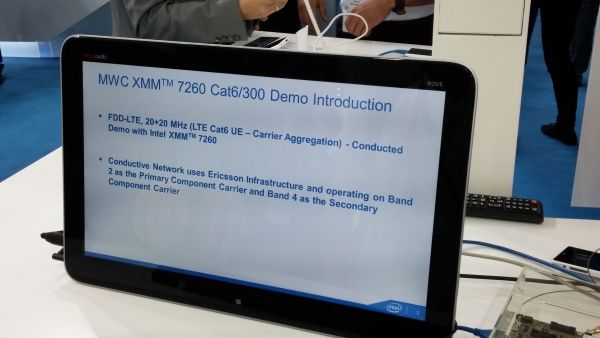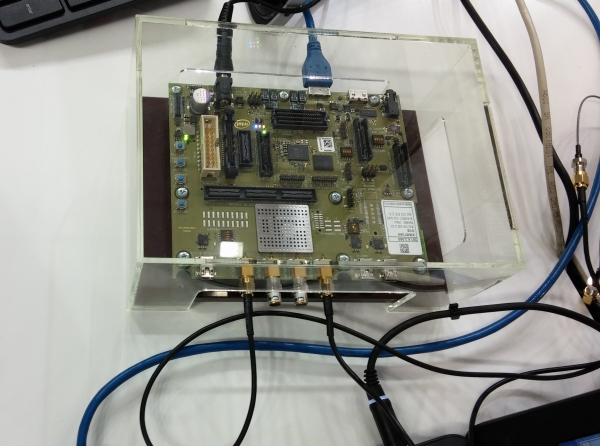We spent a fair amount of time talking to Intel engineers about LTE and we learned a few things about Intel’s plans. The current LTE network deployed in the US and some parts of the word including Europe should be able to easily upgrade to CAT 6 LTE.
The same scenario happened with LTE Advanced that could theoretically take you to 150 Mbit speeds and Cat 6 promises speeds of 300 Mbits per second.
We saw a simulation on an Intel Merrifield based phone with the XMM 7260, but the engineer we talked to said that these are the “best case scenario” numbers. The actual download and upload speeds will vary based on location, number or people connected to that particular antenna, the content they are using, distance from antenna and the broadband that will be connected to that LTE carrier antenna.
LTE starts to play very important role in many European countries and that started to happen only in the latter part of 2013. Initial deployment is ongoing, which is good news for phone manufacturers as they will have the chance to sell new phones with brand and shiny faster LTE.
Despite these miraculous 300Mbps claims, in reality most people in the US, California for example are happy if they can get 20 to 30 Mbits per second despite the theoretical limit of 150 Mbit per second with LTE A that is currently deployed.
The reality is not so generous, as the actual maximum speed is a bit lower in the real world.






